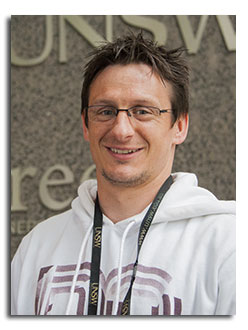
Abstract
Laser doping has a large potential for integration into silicon solar cell technologies. The ability to process local, heavily diffused regions in a self-aligned manner can greatly simplify processing sequences for the fabrication of selective emitter or localised back-surface field regions. Using continuous wave lasers, molten regions with depths of more than 10 microns can be formed and allow for advanced laser doped structure formation such as contacting buried layers in silicon solar cells or localised transistor structures.
The diffusion process using such lasers can be accurately modelled by Gaussian diffusion theory for many processing speeds, however a clear influence of the solid/liquid interface can be observed to alter the SIMS profiles from a pure Gaussian profile. In particular, this is observed to lead to a characteristic kink in the diffusion profile of regions formed using quasi-continuous wave lasers caused by a partial solidification of the silicon between successive pulses.
Laser doping can also be used to form heavily p+ regions from Al dopants released from Al2O3 passivation layers in a self-aligned process. For processing speeds of 8 m/s compatible with high throughput production, the width of the opened region is only 5 microns whilst still allowing a 3 micron deep back surface field. Subsequently, fill factors > 80% are demonstrated for large area PERL solar cells with laser doped Al p+ regions and efficiencies of 20.7%.
Typically the performance of laser doped solar cells has often been limited by the introduction of defects during the laser doping process. Hydrogen passivation is demonstrated to be an essential aspect for laser doped solar cells through the passivation of laser-induced defects, leading to increases in efficiency approaching 1% absolute.
Click here to see all available video seminars.
Click here to go to the SPREE HOMEPAGE.
Brief Bio
Brett Hallam is a Ph.D. student at UNSW SPREE.
Undergraduate: Bachelor of Engineering / Science at UNSW Australia
Photovoltaics and Solar Energy Engineering (University medal)
Thesis: PECVD Silicon Oxynitride for High Efficiency Silicon Solar Cells
Science major 1: Physics
Science major 2: Physical Oceanography/Meteorology
PhD: Photovoltaic Engineering at UNSW
High Efficiency Laser Doped Silicon solar Cells with Advanced Hydrogenation
